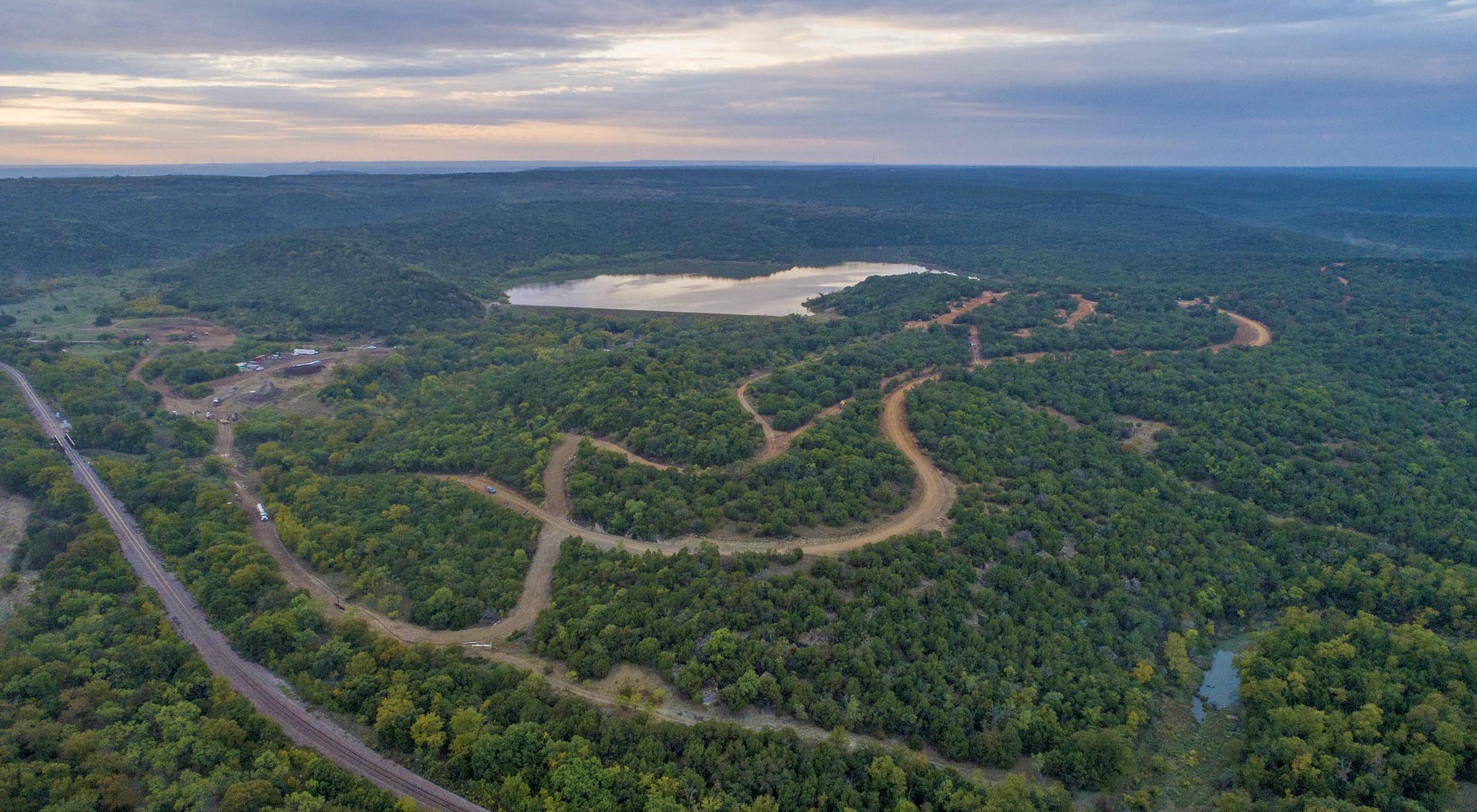Palo Pinto Mountains State Park
The first new state park in North Texas in nearly 20 years will open in 2025—and it all began with a hunt for the perfect parkland by TNC staff.
Just 75 miles west of bustling Fort Worth lies a rolling landscape crisscrossed with scenic waterways. These lands support stands of Texas oaks and wildlife ranging from deer to wild turkey in a landscape that resembles the Texas Hill Country.
The 4,800-acre protected area sustained Indigenous Peoples for thousands of years and is skirted by a railroad dating from the 1800s. Its rugged hills and blooming prairies wrap around a 90-acre lake that invites canoeing and fishing. Combine those recreational offerings with ample space for horseback riding, mountain biking and hiking trails, and you can understand why tens of thousands are expected to grace Palo Pinto Mountains State Park beginning in 2025.

A Landscape Anchored in History
While the state park's humble beginnings lie with The Nature Conservancy in Texas (TNC) and an intense hunt by staff to find the parkland more than a decade ago, historical use of this land likely stretches back much further. Features like Palo Pinto Creek, which meanders through the northern border of the new park, may have drawn Indigenous Peoples such as the Tonkawa and Caddo. Projectile points that are thousands of years old have been found on the land, as well as a fire pit from a roughly 3,500-year-old campsite. White settlers and railroaders began to occupy the acreage in the 1850s. For instance, a dam in Palo Pinto was likely once used by the Texas and Pacific Railroad to capture water for feeding the railroad's steam engines.
The languid shores of Tucker Lake were created by a dam built on Russell Creek in 1937 by the Works Progress Administration. Filled with largemouth bass, channel catfish and more, the lake is the main source of water for the nearby town of Strawn, which was founded in the late 1800s. Park visitors will soon enjoy the lake's continued peaceful ambiance—only motorless crafts will be permitted.

A Legacy of Land Protection Expertise
With much of the land having been ranched for over a century, natural features here—such as shortgrass savannas with little bluestem grasses and wild thickets of mesquite, pecan and cedar elm—are relatively pristine. Woodlands of Texas oak and Ashe juniper also occur, drawing nesting birds like the endangered golden-cheeked warbler and rare black-capped vireos, along with quail and more.
Finding such diverse habitat was just one of several criteria that made establishing Palo Pinto as one of the largest conservation pockets in North Texas no small matter. With more than 95% of land in Texas privately owned, locating multiple, large parcels of adjacent land for purchase around the same time could be likened to searching for needles in a haystack. In 2010, staff at TNC were tasked by the Texas Parks and Wildlife Department (TPWD) with finding those properties to form the ideal park. Doing so ultimately involved visiting over 40 properties in the Palo Pinto County area.


"Assembling the right land is always a challenge when you have multiple landowners who must agree on sales," said Jeff Francell, director of land protection for the Texas chapter of TNC, about the original three parcels of 3,333 acres that were assigned to TPWD. "We turned over a lot of rocks to get there."
The process took nearly two nail-biting years, during which the Texas legislature could have rerouted funds earmarked for the park's establishment. But when David Bezanson, land protection strategy director for TNC Texas, first stepped onto the future park's footprint in 2011, he was struck by what lay before him.

"We drove through the gate and up the hill and looked at the first view, and we knew that this was probably it: the wood ducks were flying down Palo Pinto Creek, and the fall leaves were turning. You could tell that this property was ecologically first rate, but also had many different recreational opportunities, beautiful views and almost unlimited hiking potential."
TNC staff previously helped preserve 34 other state and national parks, statewide. Palo Pinto Mountains State Park is expected to draw up to 100,000 visitors annually once it opens in 2025.

Quote: David Bezanson
"To have the opportunity to go out and look for a property that's going to touch so many people is just a really great thing and something we're truly proud of."
We Can’t Save Nature Without You
Sign up to receive monthly conservation news and updates from Texas. Get a preview of Texas' Nature News email.




